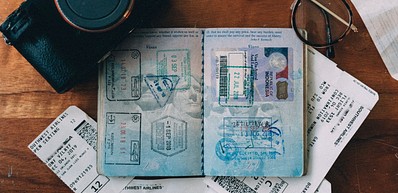
Passport/Visa
To visit Israel, your passport should be valid for at least the duration of your stay. While Israel recommends six months of validity, it's no longer a strict requirement as long as your passport remains valid during your visit.
Most visitors from countries with visa exemption agreements, including the EU, USA, Canada, and Australia, can enter Israel for up to 90 days without a visa. However, as of August 2024, an Electronic Travel Authorization (ETA-IL) must be obtained online at least 72 hours before travel. For those from non-exempt countries, a visa is required in advance.
In addition, Israel issues an entry card instead of stamping passports, which helps avoid complications when travelling to certain Arab or Muslim countries. Carry your passport if you plan to visit Palestinian territories, as it may be required at checkpoints.
Read more












